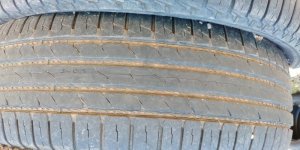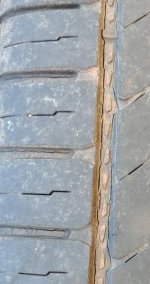The rubber is different on winter tires.
Here is some info on winter tires and a bit from the site.
https://www.theglobeandmail.com/glo...nter-tires-and-how-they-work/article32531630/
Although it's the treads that you notice, the most important part of a winter tire is actually its rubber compound, which is designed to stay soft in freezing temperatures. Like a gecko climbing a sheet of glass, a tire sticks to the road by conforming to minute imperfections. The soft rubber treads of a winter tire are able to splay and wrap themselves around minute protrusions on cold pavement, or even on what may appear to be perfectly smooth ice. Summer tires, which are designed to operate in warm temperatures, harden as the temperature falls. All-seasons, which must be designed for year-round use, cannot match winter tires in low temperatures.
Premium winter tires perform better than basic models. What you're paying for is the latest in rubber technology and tread design. What you get is traction that may be up to 15 per cent better than economy-model winter tires. If you want to see the difference between different grades of winter tires, go to an ice race. "The drivers with the premium tires are all out front," says Ontario racer and winter driving instructor Ian Law. "There's no comparison."
It's about temperature, not snow. Winter tires should be installed when you expect temperatures to fall to 7C or below. As the temperature falls, the rubber in summer and all-season tires becomes inflexible, killing traction. Watch the thermometer and use common sense, because no one will tell exactly when to put on snow tires (unless you live in Quebec, where the law dictates that your car be equipped with winter tires between Dec. 15 and March 15.)
Winter tires should be narrower than summer models. Experts recommend that you go down one or two sizes when installing winter tires – if your car came with 215-mm-wide summer tires, for example, your winter tires should be 205 mm or 195 mm. Reducing the width of a tire increases the pressure it exerts on the surface beneath it – this helps the tire slice through snow and reduces hydroplaning.
Winter tires are designed to move water. When a tire presses down on snow or ice, it melts the top layer, creating a thin film of water (the same phenomenon that occurs as a skate glides across a rink). If the water isn't moved away from the area in front of the tire, the car will hydroplane. This is why winter tires are covered with grooves (including tiny channels known as "sipes") that move water away to the sides, allowing the tire to stay in contact with the surface.


